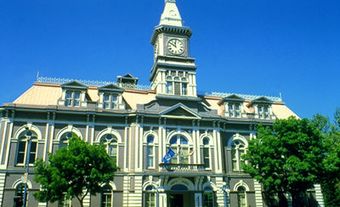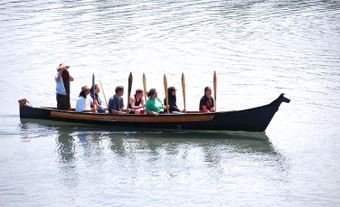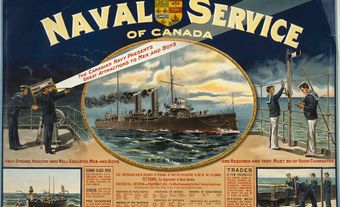Esquimalt, British Columbia, incorporated as a district municipality in 1912, population 17,533 (2021 census), 17,655 (2016 census). The Township of Esquimalt is located on the southern tip of Vancouver Island adjacent to Victoria. It was one of the earliest residential areas to be established in Metropolitan Victoria and its excellent harbour has made it an important Pacific Coast naval establishment. Esquimalt is governed by a mayor and six councillors and shares some responsibilities with the Capital Regional District.
History
The Songhees and Esquimalt First Nations (see Coast Salish) inhabited the area now know as Esquimalt and the City of Victoria for about 4,000 years prior to European settlement. The name Esquimalt comes from their language: "Es-whoy-malth" meaning "place of gradually shoaling water." James Douglas visited the harbour in 1843, and later signed treaties with the local First Nations allowing the development of three Hudson's Bay Company supply farms. Esquimalt's quiet development was shattered by the Fraser River Gold Rush(1858) when its wharf became the main point of arrival for thousands of miners heading to Victoria.
Esquimalt officially became the headquarters of the Royal Navy's Pacific Station in 1865, although the navy had constructed buildings on Duntze Head as early as 1855. By the 1880s rapid growth was occurring through the building of Royal Navy dry docks (1887), the construction of the Esquimalt and Nanaimo Railway (1886), and the founding of a military base at Work Point (1887). Esquimalt's attractive setting made it a desirable residential location for many of Victoria's business and political leaders. The navy base was abandoned by the admiralty in 1905 but became the West Coast base of the newly-created Royal Canadian Navy in 1910 (see also History of the Armed Forces in Canada).
Present Day
Of the community's original economic supports, agriculture and the military, only the latter has remained important. A large Canadian Forces Base in Esquimalt, a federal graving dock and other light industries are prominent in the economy. Several structures inside or adjacent to the naval dockyard have been listed as heritage buildings. St Paul's Anglican Church (1866) contains relics and plaques covering over a century of naval history. Some of Esquimalt's pleasant residential neighbourhoods make effective use of the community's extensive waterfront with its bays, beaches and parks.

 Share on Facebook
Share on Facebook Share on X
Share on X Share by Email
Share by Email Share on Google Classroom
Share on Google Classroom




